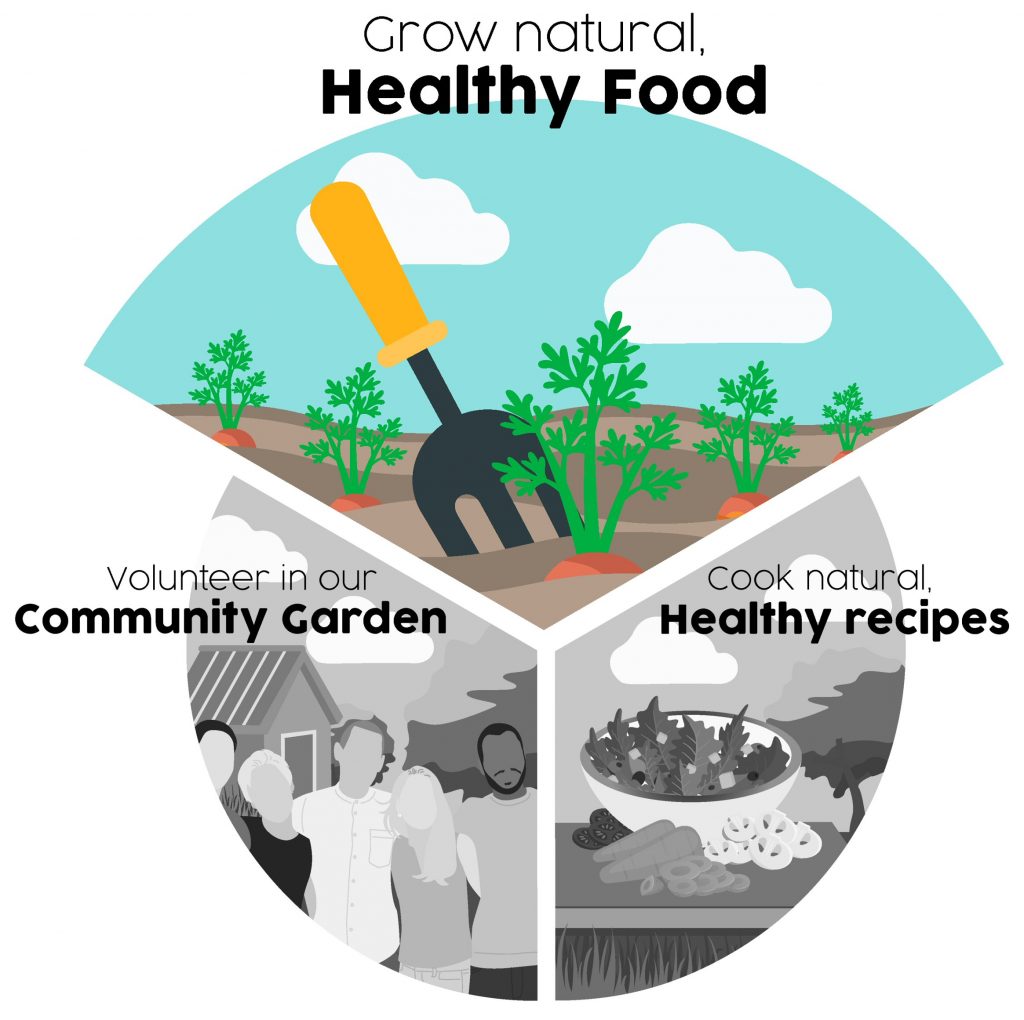
Why No Dig?
Well, apart from the obvious of not having to do some back-breaking work, no dig makes it possible to enjoy a beautiful and productive garden, full of wildlife with mixed plantings and healthy soil.
- No Dig makes soil more fertile, plants healthier and helps reduce weed problems
- When you dig the soil, it recovers from the disruption by re-growing weeds, either from roots of weeds still in the soil and from seeds blown onto the freshly cleared soil
- When left undisturbed the soil has less need to recover and grows less weeds
- Undisturbed soil is full of beneficial organisms and a fungal network which help plants to find nutrients and moisture
- Warmth is retained by soil in winter because deep-level heat can rise better through undisturbed soil
- Carbon stays in the soil rather than being converted to CO2. Bare soil after cultivation releases large amounts of CO2 into the atmosphere
- Undisturbed soil feels firm, but plants root better in dense, firm soil compared to one that has been dug and raked
Getting Started
- START SMALL – maybe an area as small as 4ft x 8ft
- Most weeds DO NOT need to be removed, though docks and woody plants such as brambles are best removed with a sharp spade
- Cut/chop grass weeds down to ground level
- Apply a mulch to the bed. The mulch is to clear soil of weeds by preventing light getting to the plants. Mulches of organic matter also feed soil
- WAIT! Leave time for weed roots to be exhausted by trying to grow without light. Typically, annual weeds take two to three months while perennials take six months or sometimes longer. If you look under the mulch and still find white stems of weeds, the roots are still alive
- After the mulch has done its job, you will have a clean surface to sow and grow!
What is mulch?
A mulch is anything that prevents weed growth by depriving the plant of light. Polythene would do but we prefer layers of biodegradable materials
1. Create a Weed Barrier
- Cardboard is a fantastic resource, particularly the big sheets like those that large electric goods come in, as large sheets are easy to lay down. Worms love cardboard and happily incorporate it into the soil. NOTE: Remove any plastic packing tape first.
- Newspaper is good, though much more difficult to lay over soil. Best wet the paper first
2. Add Organic Material
If you have a choice of mulches available, use the least rotted as the base layer.
- Grass Cuttings – thin layer
- Weed Free Straw – though in wet conditions straw can be a great home for slugs
- Fresh Manure – if this is likely to contain weeds then use a thin layer immediately above the cardboard/newspaper layer
- Hay – taking care, as above, if it contains weeds and seeds
- Leaves – are a great free resource and can be collected every Autumn
- Seaweed – easy to collect, especially after high tides
- Wood chip – takes a while to break down so use sparingly
3. Top Mulch
This is the layer that you can start to plant into. It should be at least 3” thick
- Compost – well rotted, weed free from the compost heap or bought in
- Spent mushroom compost – can be purchased from, for example, Border Aggregates
- Topsoil – be careful if this is bought in as it may be poor quality and weedy
What Next?
It’s best to leave the bed for a while to give the weeds chance to die but you can now sow into the top layer straight away.
- For tubers, or plants from pots, move back the layer(s) of mulch until you get to the cardboard/newspaper. Cut an X and peel back the corners. Put a handful of compost in the planting hole and then put in the plant. Return the layers and top mulch back around the plant, water well
- You can plant seeds directly into the compost layer. Be sure to water regularly, as compost on top of cardboard can dry out quickly
To maintain soil fertility, simply spread an inch or two of compost onto the bed every autumn. The winter weather breaks the compost into smaller pieces and the rain washes through nutrients into the soil.
Most green manures need dug in so are not great in no dig gardens. Those that are killed by the frost can work as they die and let their nutrients seep into the soils as they decompose. Green manures can be a useful way of making material for the compost heap and used on the beds once composted.
No dig isn’t a permanent barrier against weeds – they still blow onto the soil or are brought in by birds. Weeds can easily be removed by hand when small or by gentle hoeing, little and often.
Homemade plant feeds using comfrey, nettles and other nutrient rich plants are useful for adding nutrients to the beds.

